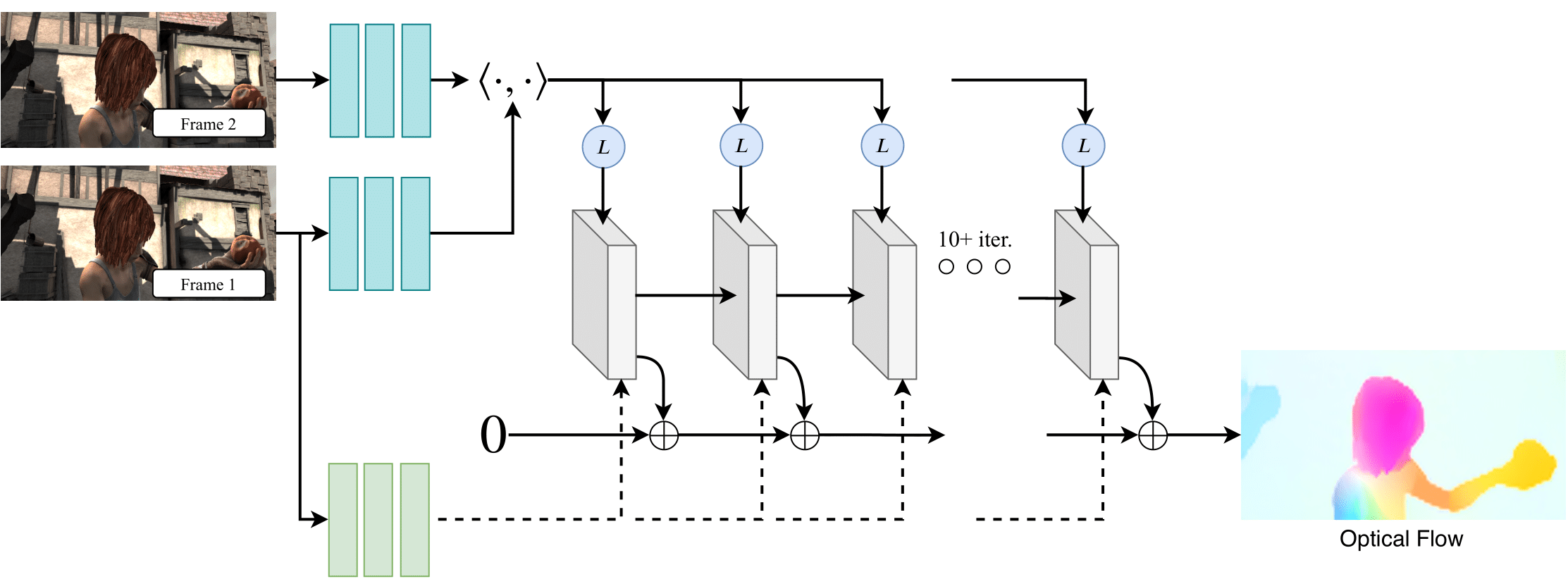This repository contains the source code for our paper:
RAFT: Recurrent All Pairs Field Transforms for Optical Flow
ECCV 2020
Zachary Teed and Jia Deng
The code has been tested with PyTorch 1.6 and Cuda 10.1.
conda create --name raft
conda activate raft
conda install pytorch=1.6.0 torchvision=0.7.0 cudatoolkit=10.1 matplotlib tensorboard scipy opencv -c pytorchPretrained models can be downloaded by running
./download_models.shor downloaded from google drive
You can demo a trained model on a sequence of frames
python demo.py --model=models/raft-things.pth --path=demo-framesTo evaluate/train RAFT, you will need to download the required datasets.
- FlyingChairs
- FlyingThings3D
- Sintel
- KITTI
- HD1K (optional)
By default datasets.py will search for the datasets in these locations. You can create symbolic links to wherever the datasets were downloaded in the datasets folder
├── datasets
├── Sintel
├── test
├── training
├── KITTI
├── testing
├── training
├── devkit
├── FlyingChairs_release
├── data
├── FlyingThings3D
├── frames_cleanpass
├── frames_finalpass
├── optical_flowYou can evaluate a trained model using evaluate.py
python evaluate.py --model=models/raft-things.pth --dataset=sintel --mixed_precisionWe used the following training schedule in our paper (2 GPUs). Training logs will be written to the runs which can be visualized using tensorboard
./train_standard.shIf you have a RTX GPU, training can be accelerated using mixed precision. You can expect similiar results in this setting (1 GPU)
./train_mixed.shYou can optionally use our alternate (efficent) implementation by compiling the provided cuda extension
cd alt_cuda_corr && python setup.py install && cd ..and running demo.py and evaluate.py with the --alternate_corr flag Note, this implementation is somewhat slower than all-pairs, but uses significantly less GPU memory during the forward pass.
